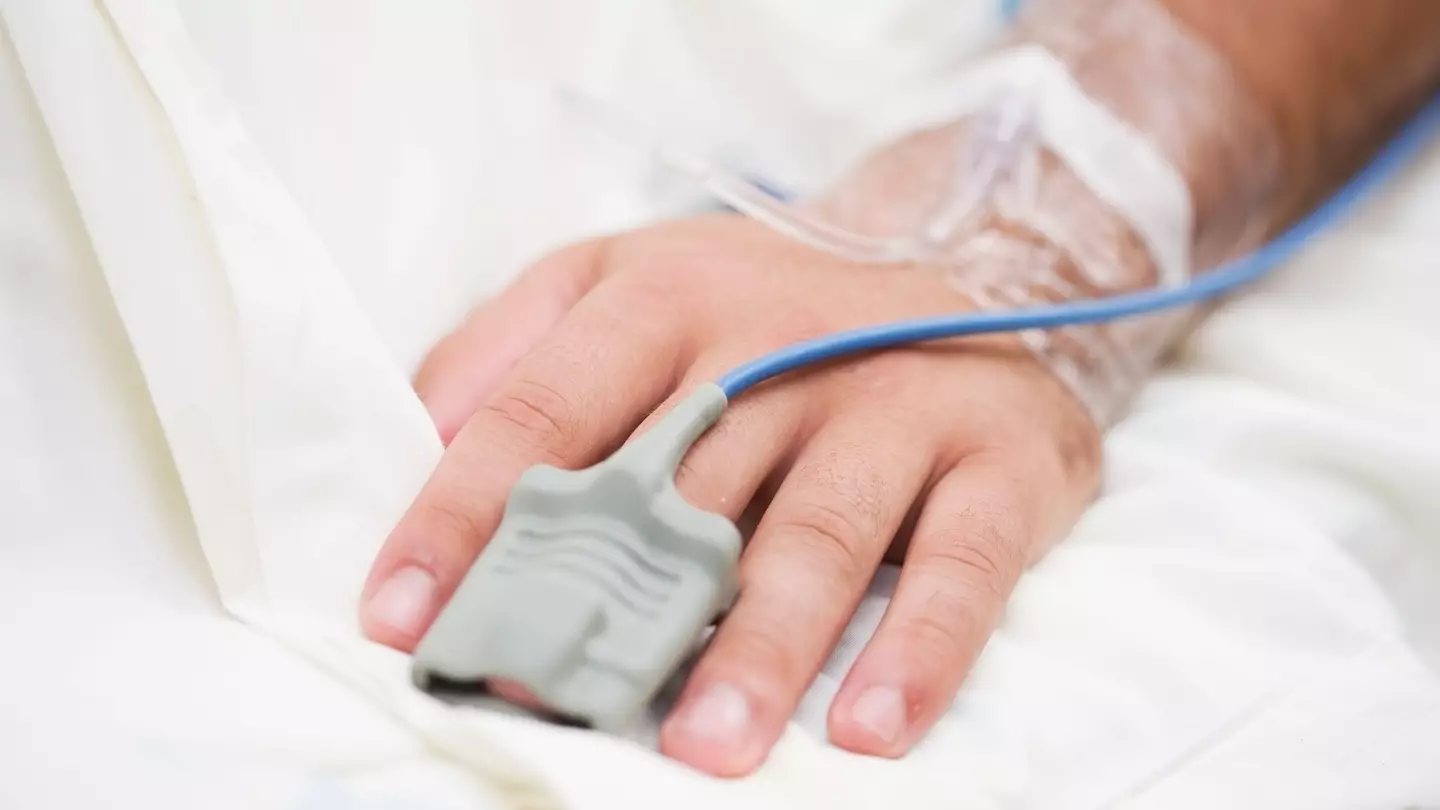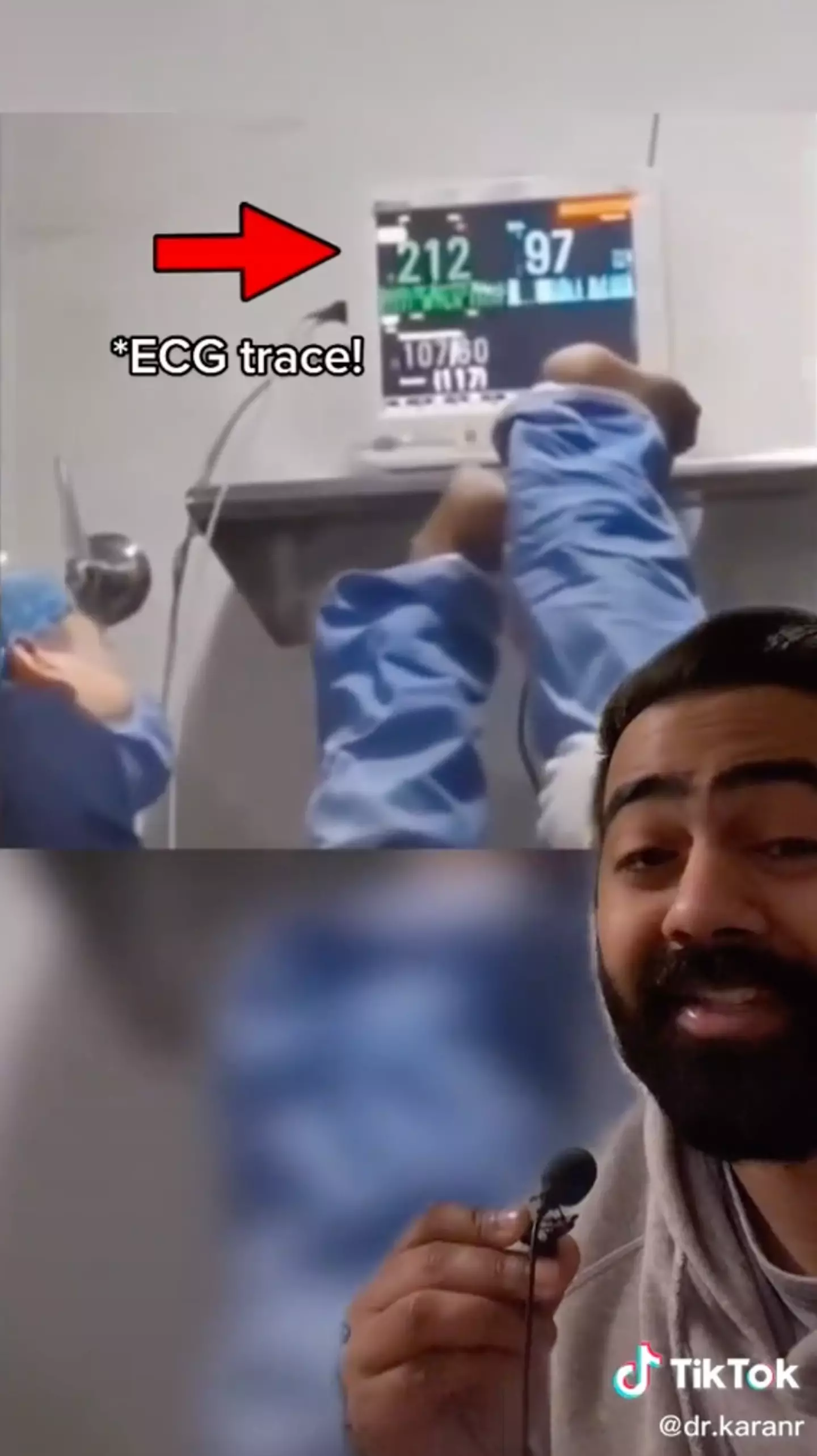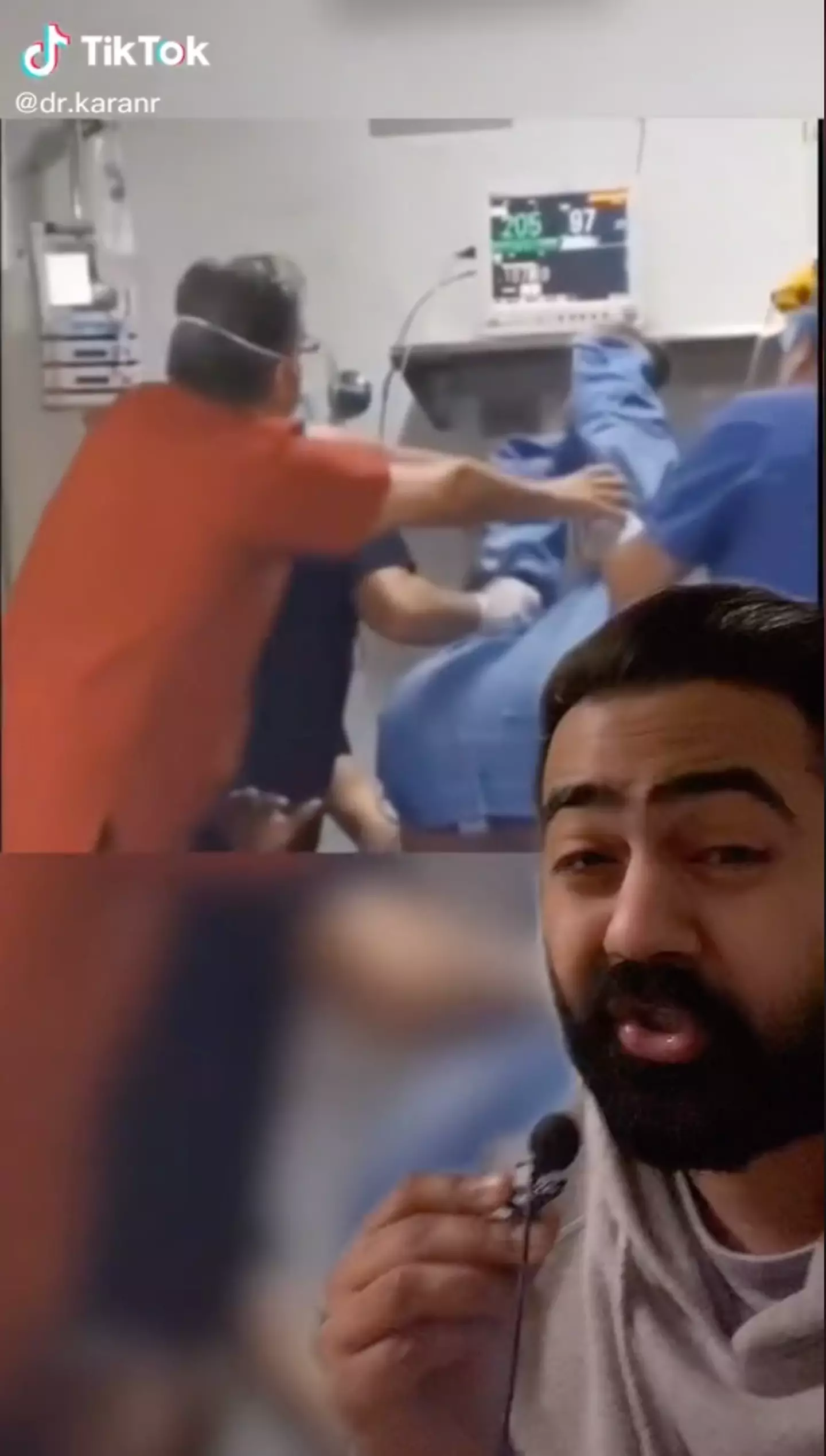
A doctor has explained how it's actually possible to perform a 'factory reset' on the human body. Take a look below:
Now, we've all heard those wise words of advice when our smart phones and electronic devices decide to play up: "Have you tried turning it off and then on again?"
Doing a factory reset on a broken device has, since time immemorial, been the be-all and end-all solution. But what about doing it on the human body?
According to NHS doctor Karan Raj, medical professionals actually use the same technique with humans.
In a TikTok video published on 17 January, Dr Raj explained the procedure shown in a video posted by Alireza Sadeghi.
He said: "What you're about to see is basically the human version of turning it off, then turning it on again - a factory reset."

The background video shows a man wearing blue scrubs in a hospital bed surrounded by medical staff.
A tube protrudes from his mouth and the electrocardiogram (ECG) behind him displays a heart rate of 215 beats-per-minute.
Healthline suggests contacting a doctor if it rises above 100.
Dr Raj said this sudden and unexpected increase in heart rate is called a Supraventricular tachycardia (SVT).
According to the NHS, SVT can occur when the electrical system controlling the heart's rhythm fails and can be triggered by caffeine, fatigue, alcohol, or drugs.
In Dr Raj's video, the medical staff lift the patient's legs into the air until his toes are pointing towards the wall behind his head.
They keep him in that position and watch the ECG display as seconds pass. And then, the heart rate begins to fall. First to 197. Then to 189. Then to 133.

"The position the guy's in is something called a modified valsalva manoeuvre to try to bring the heart rate down," Dr Raj said. "And this manoeuvre is definitely working."
If the manoeuvre fails, medical staff can give the patient adenosine - a natural chemical that blocks electrical signals in the heart, according to WebMD.
Dr Raj is used to alternative methods of applying medicine after working often virtual shifts during the pandemic.
He shared his story with BritishRedCross and wants to combat misinformation about medical care through his TikTok channel.
The channel has racked up 4.6 million followers as well as 249 million likes for its videos dispelling medical myths and illuminating the realities of complex procedures.
Featured Image Credit: Alamy